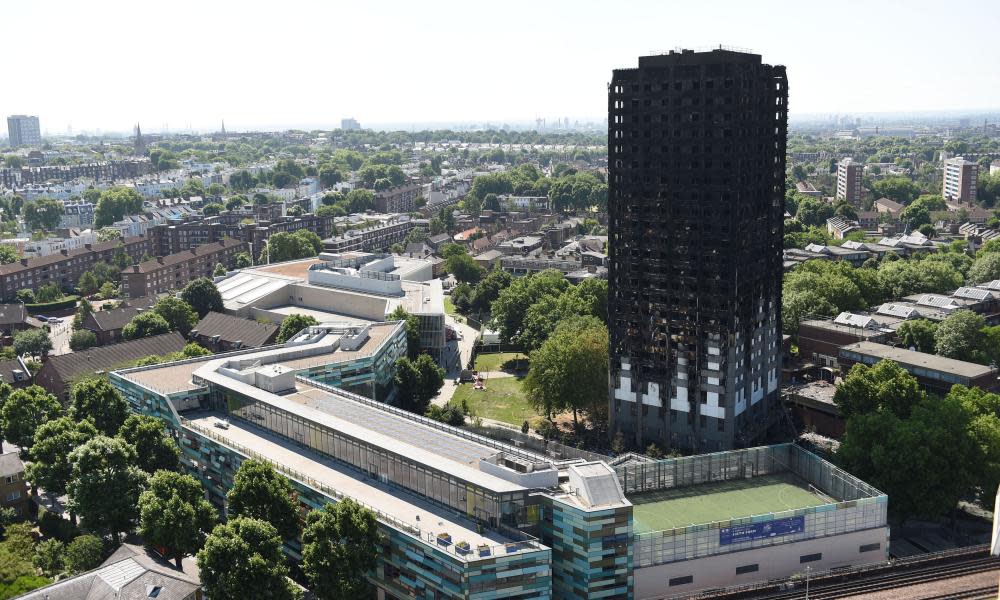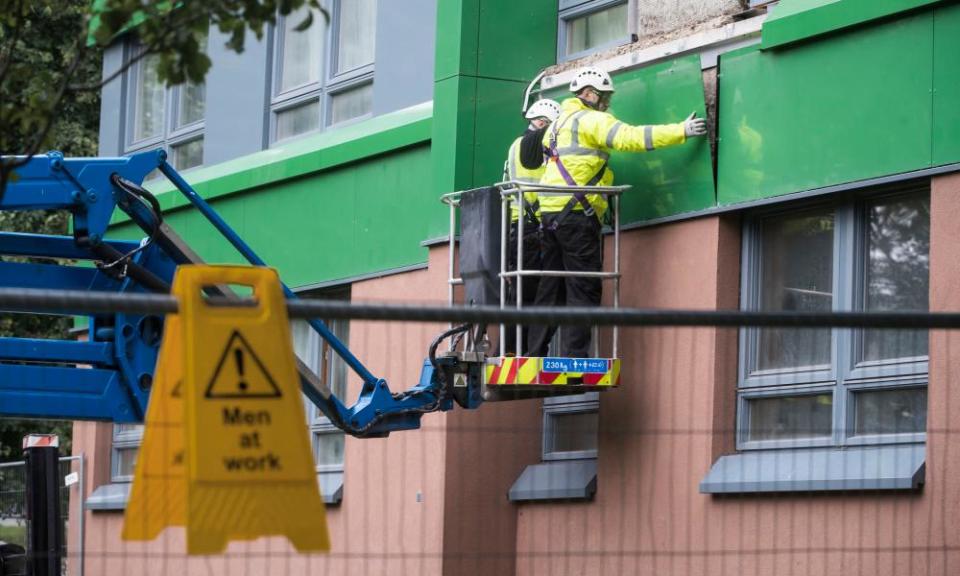Towers with Grenfell-style cladding ‘at risk of arson and terrorism’

Public officials fear terrorists and arsonists could target high-rise homes that are still covered in combustible Grenfell-style cladding, amid increasing delays to safety works, a Guardian investigation has found.
The estimated bill to reclad at least 288 towers in England, which failed combustibility tests after 71 people died at Grenfell Tower in west London, is now on course to reach £1bn. There are waits of up to seven months to test alternative systems to ensure they are safe, and legal disputes are holding up works elsewhere.
Concern over terrorism and arson has been voiced in central and local government, and councils are now trying to keep the locations of scores of affected blocks secret because of the perceived danger.
Freedom of information requests were sent by the Guardian to 36 councils across England known to have failed towers in their areas, in order to chart the scale of the problem with flammable cladding nine months after the Grenfell tragedy.
One council-owned block in Slough, Berkshire, with combustible insulation has already been attacked by arsonists several times, the local authority confirmed. Another private block in the town, fitted with aluminium composite material panels similar to those at Grenfell, has a fire crew and wardens on 24-hour watch.
Slough borough council refused to release detailed information about affected buildings, citing the government’s “concerns that vulnerable buildings could become a target for terrorist activity”. It said there was a “real and significant risk” of repeat attacks.
In the London borough of Islington, 44 buildings remain under investigation and seven have been confirmed as clad in flammable panels. The council would not say where the buildings were because “in the wrong hands the information could be used by arsonists/terrorists”.
Some officials are also worried landlords might be attacked by angry residents. Wandsworth council in south London said releasing information “may allow an individual building owner to be found by other individuals intent on harming them”.
The concerns come amid fresh fire-safety fears, after detectives investigating the Grenfell disaster revealed that apartment front doors that were supposed to withstand fire for 30 minutes failed in half the time.
The housing minister, Dominic Raab, also admitted that only around a quarter of the affected households had been permanently rehoused, with 84 of 208 still in emergency accommodation. The government had pledged to rehome all families within a year. The public inquiry into the fire resumes this week.
Ministers have admitted that only seven of the 158 social housing blocks in England that have failed cladding tests have been reclad. Officials don’t know the speed of progress in the private sector, where at least 130 tall buildings failed combustibility tests; the Guardian’s investigation suggests it is slower.
Of 10 councils that provided information about privately owned tower blocks, half said none of the failed cladding had been removed, accounting for 1,220 homes. Tens of thousands more homes are likely to be unfixed. Officials are frustrated at the failure of many private landlords to provide information and are now providing councils with £1m to help track them down.
The security services do not know of any specific terror threat, the Guardian understands, but the authorities’ concern at the risk of attacks on buildings is likely to increase anxiety about the slow progress of remediation works.
The Guardian this week visited students in Nottingham and Leicester living in halls of residence still entirely clad in panels that had failed tests. In Salford, Greater Manchester, 29 tower blocks were found to be wrapped in cladding that failed government safety tests, but work to remove the material ground to a halt last autumn.
The London borough of Greenwich, which declined to reveal its affected blocks, is home to a complex of 12 tall buildings occupied by 3,000 people. The buildings are still clad in combustible panels amid a legal dispute over responsibility for the £40m replacement cost; residents have said they fear for their safety.

The National Housing Federation (NHF), which represents social housing landlords, is calling on ministers to accelerate works and cut costs. It said long delays were being caused by a lack of fire experts and specialist contractors, as well as a queue of 50 systems waiting to be tested at the Building Research Establishment (BRE).
“Government must lead on identifying and unblocking delays at every stage,” said Lucy Grove, Grenfell programme lead at the NHF. “Right now, this means making sure BRE prioritises tests for materials being used on these buildings.”
The federation is also calling on the chancellor, Philip Hammond, to remove VAT on cladding works. The average cost per tower, according to information provided by councils about the refit of 21 towers, is £3.5m and there are ongoing disputes in the public and private sectors over who should pay.
A spokesperson for the Ministry of Housing, Communities and Local Government said: “This process is complex and will take time. While this remediation work is ongoing, interim safety measures have been put in place to ensure these buildings are safe now.”
Not all councils insisted on keeping the locations of their affected buildings secret. Nineteen provided addresses for buildings with failed cladding and some withheld data for other reasons, including fearing being sued by owners whose property values might drop.
In Oldham, Greater Manchester, where there are believed to be between one and five failed privately owned buildings, the council refused to provide further information, citing “public safety risks”, “distress to residents”, “unwarranted negative attention from the media” and the risk that owners “may face loss of insurance cover and suffer property depreciation”. Wandsworth refused to divulge the whereabouts of between four and eight failed private buildings because of the potential for “widespread public panic”.
The London borough of Lambeth said it was worried about being sued by owners who may suffer a fall in demand for their flats. There are understood to be between four and nine such blocks in the borough. It added: “It is not in the public interest to provide information if to do so would mean that the council had to pay a significant amount in compensation to third parties from the public purse.”

 Yahoo News
Yahoo News 